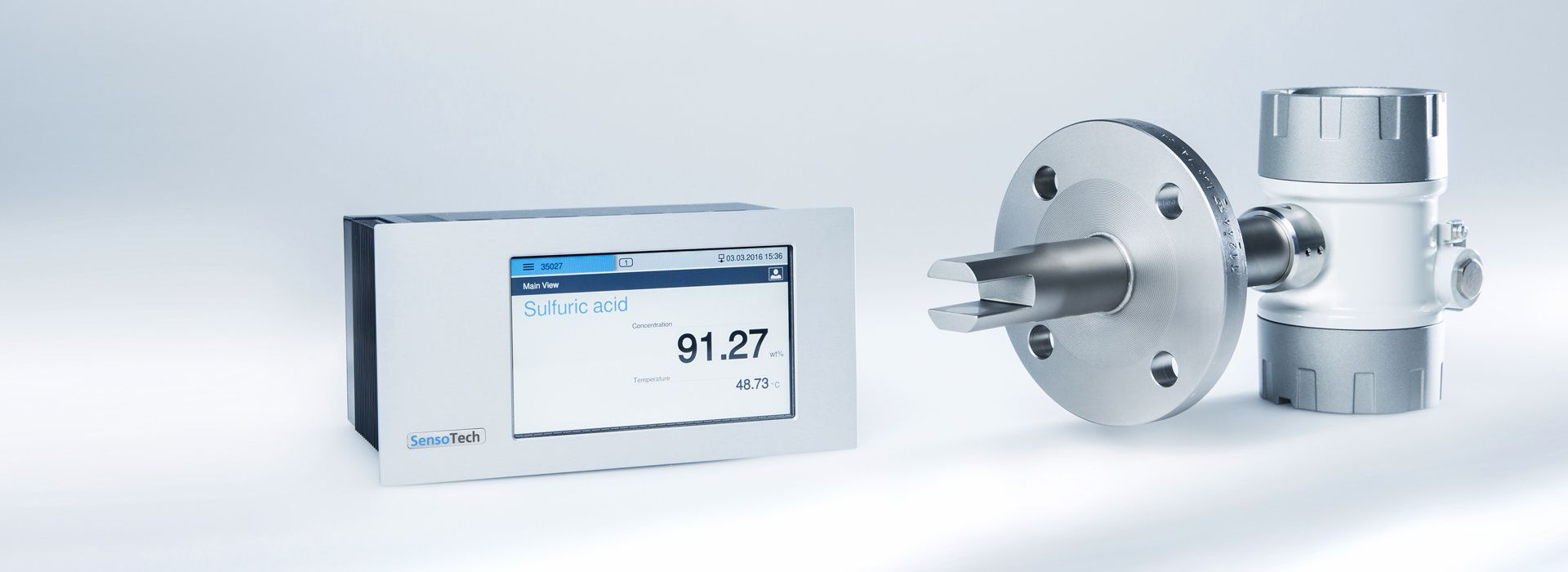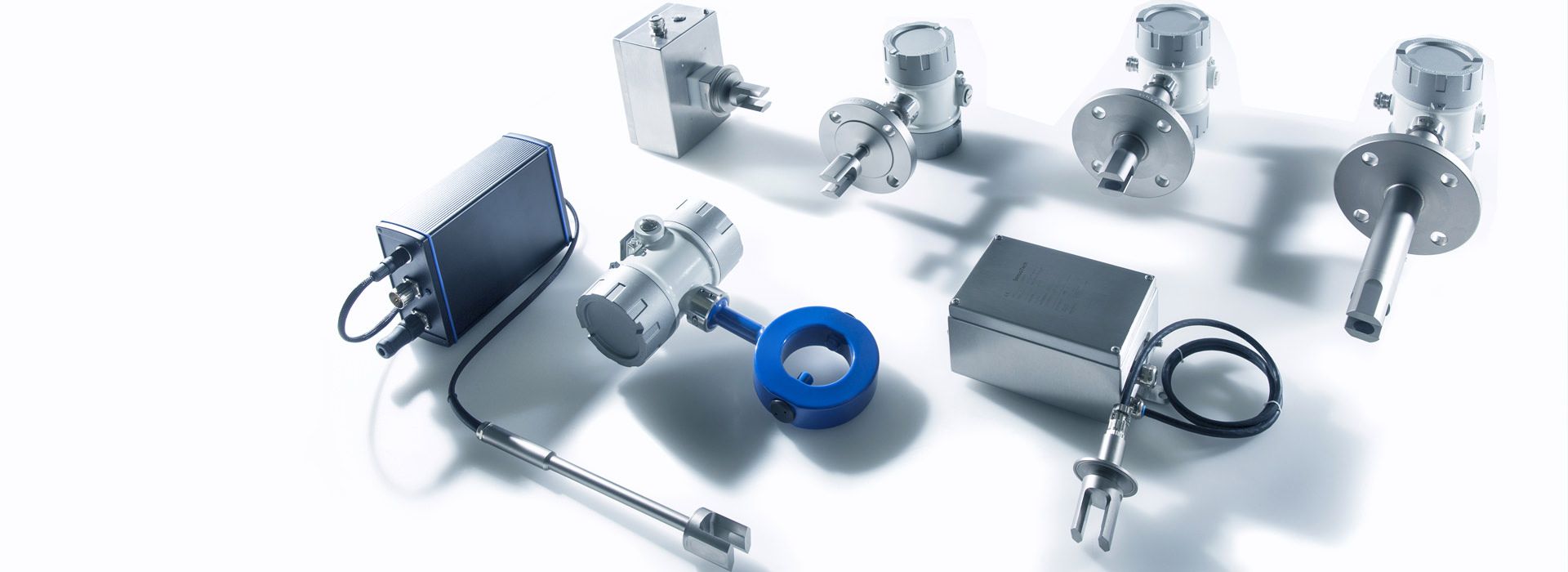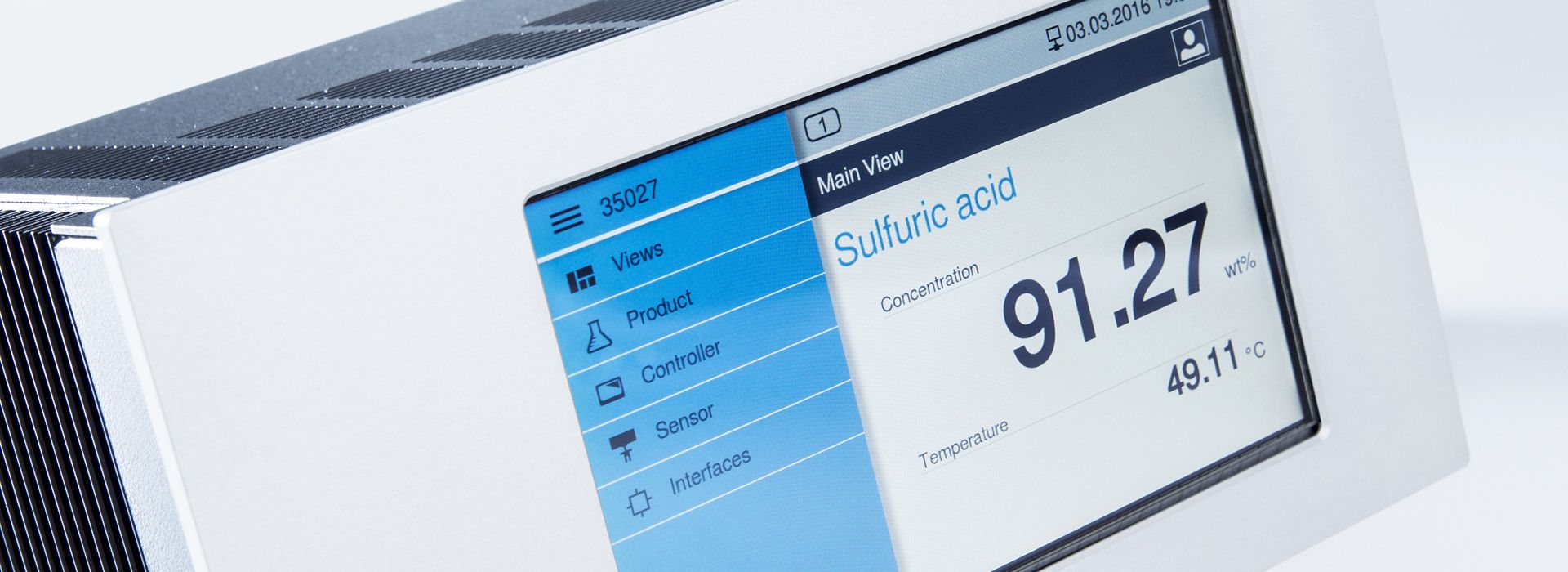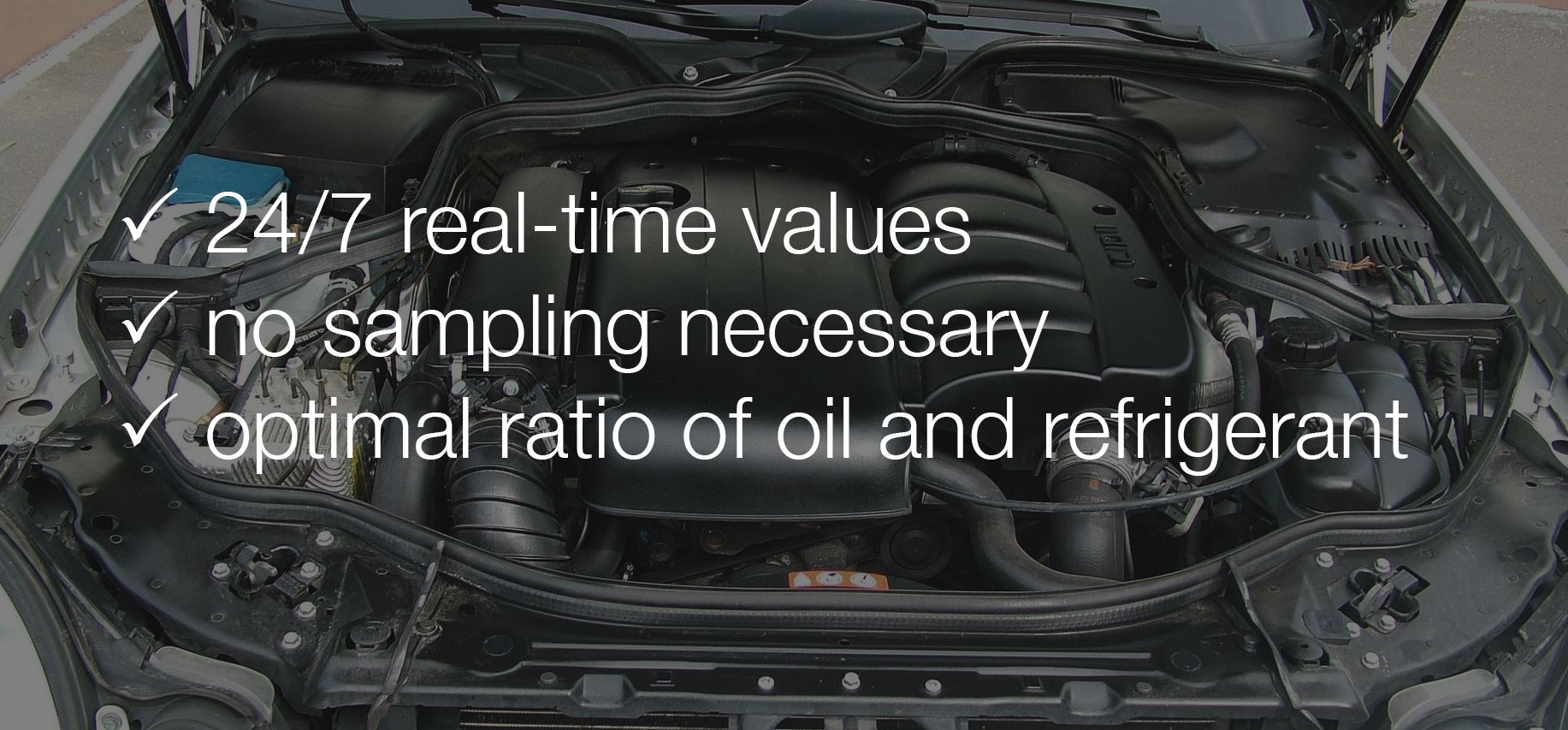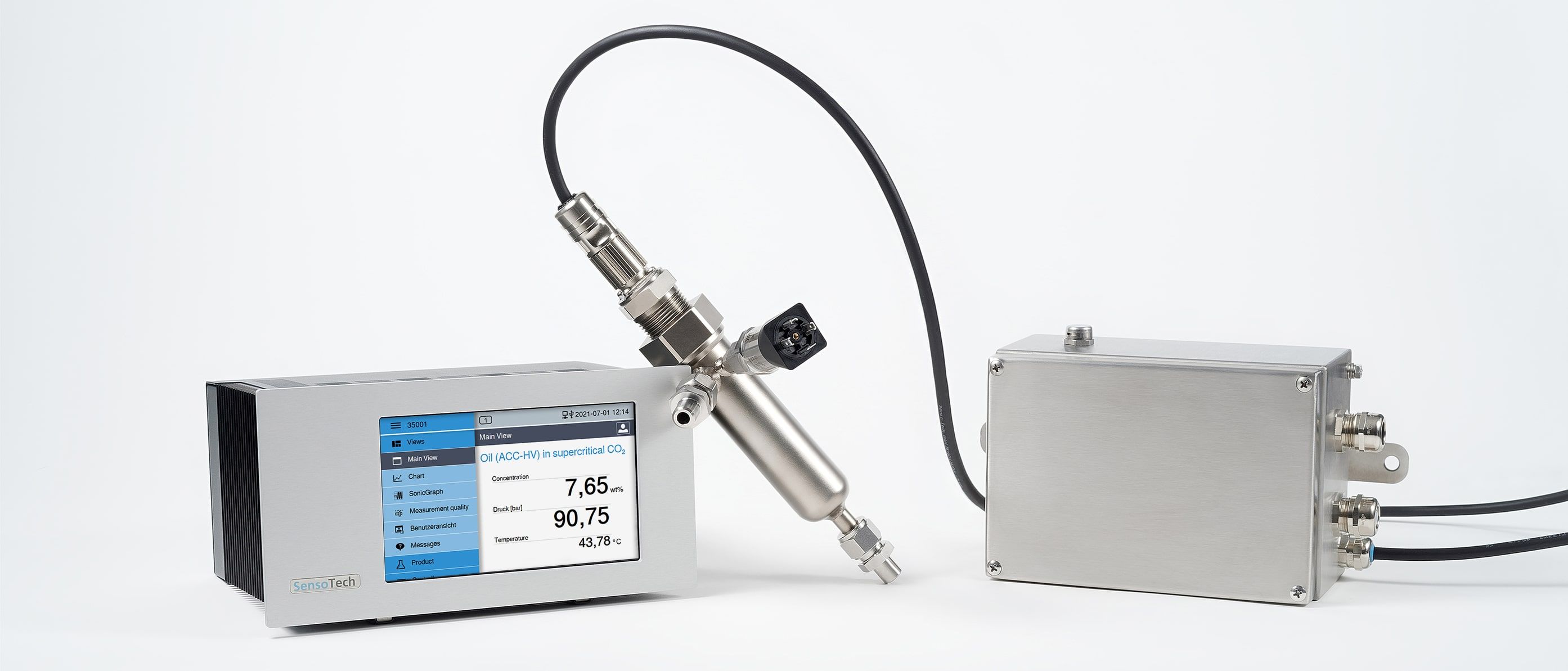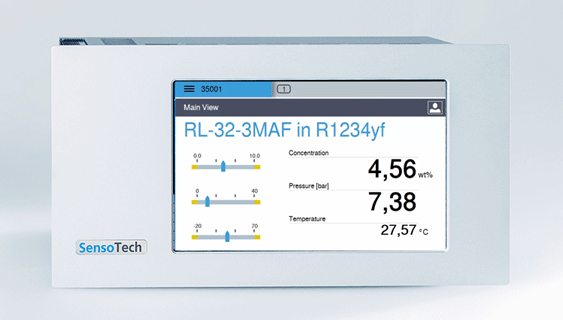Monitoring of oil concentration in the refrigerant circuit
Sensors for process optimization of CO2 gas scrubbers
Decades of experience show that measurements in research, especially in the refrigerant circuit, are complex and complicated. Sampling is often difficult or not possible at all. Therefore, the ratio between oil and refrigerant must be estimated by indirect methods.
The goal is to find out how efficiently a cooling system operates depending on the oil concentration. The information obtained from the measurements provides insight into how the processes in the compressor proceed and when it is no longer operational.
To perform the measurements as precisely as possible, SensoTech has developed the inline solution LiquiSonic® OCR which brings unbeatable advantages.
What if the ratio between oil and refrigerant is known at any time and with high precision?
What if no elaborate samples need to be taken to determine the oil/refrigerant ratio?
Through LiquiSonic® OCR comprehensive information about the refrigerant process is continuously available. The permanent knowledge of the concentration ensures optimal process control, while the rapid approach to the optimal oil/refrigerant ratio reduces the adjustment time.
The optimal ratio of refrigerant and oil with LiquiSonic® OCR efficiently determined
SensoTech makes it possible to have precise knowledge of the concentration of compressor oil in refrigerant at any time. Accurate inline measurements eliminate the need for cumbersome and error-prone sampling. Measurement values are available at any time and are updated every second.
Highest precision in monitoring oil in the refrigerant circuit
SensoTech places the highest value on precise measurements when monitoring oil concentration. The determination of oil concentration is based on pressure, temperature, and sound velocity measurements in the liquid refrigerant. This highly accurate measurement principle allows for precise adjustment of the desired oil circulation speed.
Continuous determination of oil concentration instead of spot measurements
The great advantage of online oil condition monitoring is the permanent availability of measurement values. Due to the second-by-second update of the data, the operator always has precise knowledge of the measured oil concentration. Time-consuming adjustments of the oil concentration in the circuit are thus a thing of the past.
Monitoring a variety of refrigerants with a refrigerant measuring device
SensoTech impresses with sustainable and comprehensive process solutions. A total of up to 32 product data sets (calculation models) can be stored in the controller. This makes it easy to cover a wide range of refrigerants with the LiquiSonic® measurement technology to monitor. Due to decades of experience and manufacturing of measuring devices, there is almost no refrigerant left that has not yet been measured by SensoTech.
Selection of measured refrigerants
- R134a
- R407c
- R410A
- R744
- R1234yf
- R1234ze
- R290 (Propane)
- R1233zd (E)
- R407A
- R404A
- R454-B
- R454-C
- R717 (Ammonia)
Selection of measured compressor oils
- D11
- ND12
- PAG
- ACC-HV
- POE 68
Comprehensive support for the analysis of oil in the refrigerant circuit
- Clarification of framework conditions
First, it is discussed with the user which medium should be measured. The SensoTech engineers check whether the combination of refrigerant and oil is already present in the existing database. If this is not the case, the feasibility of the measurement is determined in the in-house laboratory.
- Clarification of the specification for the measurement of oil in refrigerant
Once the measurement task is clear, specifics are clarified. Among other things, whether special materials, installation variants, or special accessories are needed for monitoring in the refrigerant circuit. The system developed for this application LiquiSonic® OCR system already has a special measuring head and an adapter vessel, for example. This equipment enables seamless integration into the refrigerant circuit.
- Installation qualification on-site at the refrigerant circuit
If desired, SensoTech supports the entire process. Our application engineers check the correct installation of the measurement system and verify if the initial measurements are running correctly.
- Regular training and education
For various applications, SensoTech offers additional webinars and training sessions. This allows the operator to become familiar with the measurement system in advance or to discover new functions afterwards.
- Provision of new datasets for oil in refrigerants
The LiquiSonic® measurement system is not limited to a specific refrigerant or oil. As part of investigations, various refrigerants, such as refrigerant R32 and R134a, are analyzed in the in-house SensoTech laboratory. The use of another refrigerant at a later stage is not a problem. For this, SensoTech simply calculates a new dataset, loads it onto the controller, and the oil content in the new refrigerant can be determined.
- Consultation on follow-up projects
For questions about the projects or further applications, the competent team from SensoTech is available for consultation.
Practical application examples of already measured refrigerants
There are countless refrigerants in use worldwide. As a globally operating company, SensoTech has already realized numerous projects with partners.
Oil circulation rate in R410A
- Mainly used in refrigeration and air conditioning systems as well as in heat pumps in buildings
- Very precise inline determination of oil concentration
- Replacement refrigerant for banned R22 systems
Refrigerant analysis for R1234yf
- 357 times more climate-friendly than other used refrigerants
- Used as a replacement for R134a in new cars
- More efficient operation at higher temperatures
- Used in automotive air conditioning systems
Oil in refrigerant R134a
- Banned in new cars within the EU, therefore often used outside the EU
- Worldwide use in automotive air conditioning systems
- R134a is considered the standard reference worldwide
FAQ on determining the concentration of refrigerant oil
For questions about measuring the oil concentration in the refrigerant circuit or about the measurement system LiquiSonic® OCR the competent team of SensoTech is available.
Frequently asked questions:
- Why is sampling for determining the concentration of the refrigerant-oil mixture problematic?
A sample collection to determine the concentration is inaccurate and cumbersome, as the closed system is interfered with. In general, refrigerants evaporate as soon as they come into contact with air. The samples amount to about one liter. The analysis is carried out in the laboratory. The concentration of oil in refrigerant to be determined is only available after a considerable time and is only a snapshot. The missing sample quantity ensures that the determined measured value does not reflect the current concentration. The systemmust first stabilize again. A real-time inline monitoring is therefore preferable to sampling.
- What is the purpose of the oil in a refrigeration system?
The oil in the refrigeration system lubricates the compressor and ensures that it functions smoothly and does not get damaged. The perfect mixing ratio of oil and refrigerant must be observed. The rule here is: as little oil as possible, but as much as necessary. Too much oil can, among other things, reduce the cooling capacity.
- What happens if there is too much oil in the AC system?
If there is too much oil in the AC system, it results in a reduction of the cooling capacity. This reduction ensures that the AC system only functions to a limited extent, thus requiring more time to reach the desired cooling or the desired temperature cannot be achieved.
- What type of oil is used in the refrigerant?
There are a variety of combinations of oil and refrigerant used in different compressors. The exact type of oil used depends solely on the compressor manufacturer, as the respective compressors are only suitable for certain oils.
- Can the refrigerant in the air conditioning system be replaced with another?
While measurements can be made in any known refrigerant, not every refrigerant can be used in every air conditioning system. If a different refrigerant is used than before, it can attack and damage the seals of the compressor.

